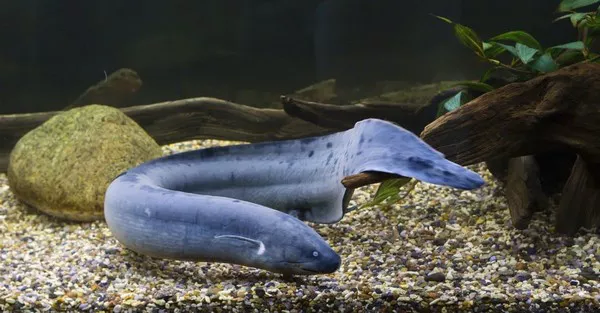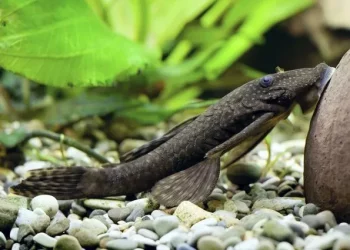The Australian lungfish (Neoceratodus forsteri) is a fascinating aquatic species that has captured the attention of biologists and nature enthusiasts around the world. This unique freshwater fish is found exclusively in Australia, inhabiting slow-moving rivers, streams, and lagoons on the eastern coast of the country. While the lungfish’s ancient lineage and remarkable respiratory system have received much attention, less is known about its diet and feeding habits. In this article, we will explore what the Australian lungfish eats and how it obtains its nutrition.
First, it is important to note that the Australian lungfish is a primarily herbivorous species. Unlike many other freshwater fish that feed on insects, crustaceans, and other small animals, the lungfish relies almost entirely on plant material for sustenance. This makes it a unique species within the broader class of bony fishes, which includes many predatory and omnivorous species.
So, what exactly does the Australian lungfish eat? The answer is that it primarily feeds on aquatic vegetation, such as algae, water lilies, and other aquatic plants. It has been observed grazing on the riverbed, using its specialized jaws to scrape and crush plant material. The lungfish has a unique dentition that allows it to consume tough and fibrous plant matter, which is not easily digested by other fish species. Its teeth are arranged in a series of plates that form a crushing surface, allowing it to grind up tough plant material into smaller pieces that can be swallowed and digested.
While the Australian lungfish is primarily a herbivore, it has been known to consume small amounts of animal matter on occasion. This can include insects, snails, and small crustaceans that are found among the aquatic vegetation. However, such animal matter forms a very small portion of the lungfish’s overall diet, and it is unlikely to have a significant impact on its health or survival.
Another interesting aspect of the lungfish’s feeding habits is its ability to survive for long periods without food. The lungfish is able to slow down its metabolism and enter a state of torpor during periods of food scarcity. This allows it to conserve energy and survive for extended periods without feeding. In fact, the Australian lungfish is known to go without food for up to a year in some cases, relying on stored fat reserves to sustain itself during this time.
In conclusion, the Australian lungfish is a unique and fascinating species that primarily feeds on aquatic vegetation. Its specialized dentition allows it to consume tough and fibrous plant material that is not easily digested by other fish species. While it may consume small amounts of animal matter on occasion, such matter forms a very small portion of its overall diet. The lungfish’s ability to enter a state of torpor and survive for long periods without food is another interesting aspect of its feeding habits. Overall, the Australian lungfish serves as a reminder of the remarkable diversity of life that exists within our planet’s freshwater ecosystems, and the important role that each species plays in maintaining the health and balance of these delicate environments.


























